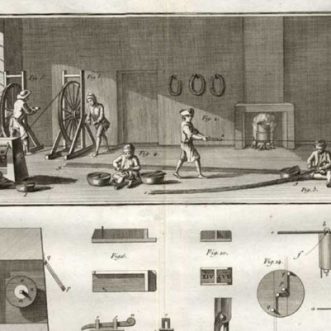
Rescuing babies
Sometimes, all it takes to solve a new problem is to revisit an old technology, applying the best of the new technologies we’ve developed since we last used it, to make it work far better than last time.
Sail Cargo is one such solution, using ancient technologies in a 21st century way.
Another is Homespun/Homegrown – where the old textile town of Blackburn will grow and make it’s own jeans using the even more ancient technologies of flax and woad, alongside some thoroughly modern manufacturing, marketing and distribution methods.
Babies don’t have to be thrown out with bathwater.
You can fish them out first, and help them grow up gracefully.








